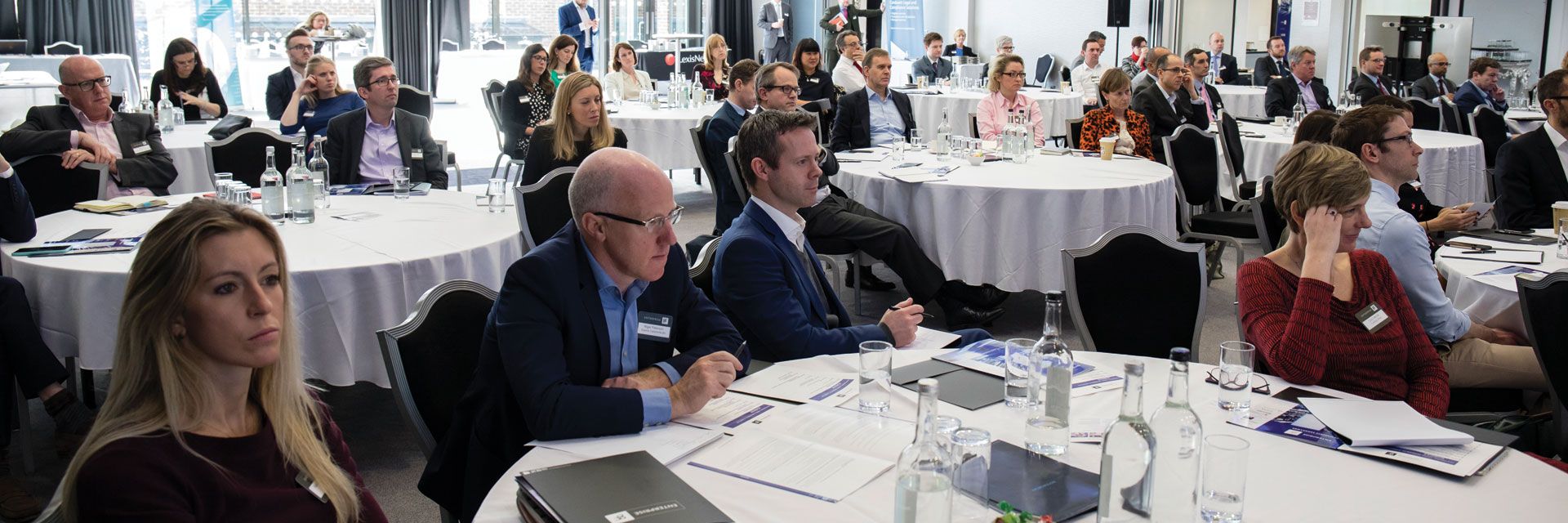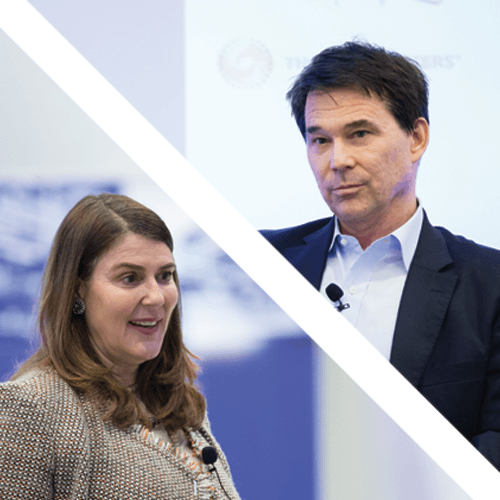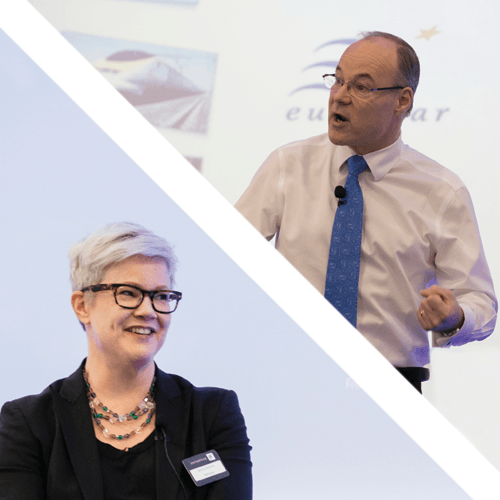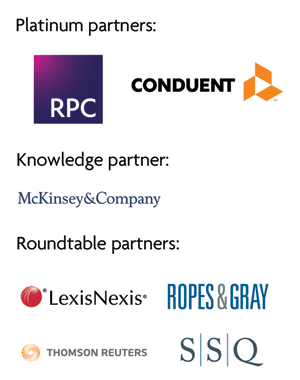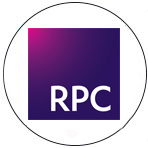
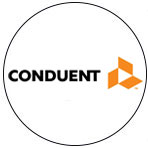
Business leaders have to be fit to survive and succeed in a rapidly evolving business climate, and a common thread across this year’s keynote presentations was that agility = achievement. C-suite executives need to be flexible and dextrous – and the GC role encapsulates this trend.
Bjarne Tellmann: Don’t be a kakapo
In his keynote, based on insights from his upcoming book Building an Outstanding Legal Team, Pearson GC Bjarne Tellmann traced changes in the GC role back to macroeconomic shifts in the business world. He painted a picture of ‘frightening’ increases in regulation, globalisation, falling corporate profits and the resulting need to do more with less, against a backdrop of increased volatility and nervous senior management, alongside converging risks that encompass more than the purely legal.
In the midst of all this, GCs occupy a ‘T-shaped’ role, said Tellmann, referencing their deep functional expertise and position as a connector across many categories. This broad reach means that the GC is expected to take on more roles, often acting as technologist, project manager, motivator, COO, and mini-CEO within the department. And as they themselves branch out, so must the legal team, which calls for an environment that forces in-house counsel to think creatively. He suggested strategies for achieving this, such as getting to know people outside of the legal profession, ‘double-hatting’ (running non-legal business divisions concurrently with a legal role), or assuming roles outside the comfort zone.
Tellmann debated the relative desirability of generalists versus specialists, reasoning that an effective plan for the necessary number of specialists hinges on a solid grasp of the business’s core risks. Risk, he said, is a ‘living thing… permeating and morphing and evolving’, which must therefore be regularly revisited, ideally also from the perspective of those sitting outside the legal department. He advocated consulting other divisions of the organisation, non-executives and outside counsel, as well as reframing risk assessment in unexpected ways – ‘The business is no longer: what happened?’ – because, he said, ‘We think in boxes, so you cannot really think out of the box, but you can think in new boxes.’
Great leaders must possess a number of qualities, according to Tellmann, and many of these rest on adaptability – such as his distinction between formal learning and ‘organic’ learning, like internet-based, tailored ‘knowledge-grazing’, which facilitates the import and export of good ideas. Another indispensible leadership skill is to be ‘comfortable with discomfort’, while managing the attendant high levels of stress.
But the GC is not the only part of the team that needs to be flexible and, according to Tellmann, change and change management – whether through fundamental business transformation, a cultural make-over or a new technology roll-out – is inevitable. Although change might feel unnatural (and needs to be managed transparently, bearing the emotional cost on individuals in mind), Tellmann argues that it is the ‘natural state’. He gave a vivid warning to those who might be tempted to stand still:
‘There is a flightless bird in New Zealand called the kakapo. Its natural instinct when there is danger is to freeze up. That worked really well when its only predator was a (now-extinct) eagle. It did not work so well when people brought cats to the island: it was a disaster. You cannot let your people freeze up.’
Herminia Ibarra: What got you here will not keep you here
INSEAD professor Herminia Ibarra also highlighted the dangers of being wedded to old ways of thinking. GCs know that their first days in a new role will require adjustment to a new context, she said, but often expectations about the role evolve without an explicit change of position. Instead of a clear transition point, the individual gradually becomes aware that technical and professional expertise are no longer enough to lead, persuade and motivate. Suddenly they need a broader package of skills – people management, business acumen and big-picture thinking – perhaps more similar to those of the head of a different function than to a member of their own team.
Left: Herminia Ibarra, INSEAD. Right: Bjarne Tellmann, Pearson.
In this situation, said Ibarra, it is human nature to negotiate the transition by analysing and planning. But often this approach is flawed, because it is based on what has worked in past experience. What the GC needs is ‘outsight’ – fresh perspective, gleaned from doing new and different things with new and different people. This is the central premise of her book, Act Like a Leader, Think Like a Leader, in which Ibarra argues that leaders need to try out new tactics, either by using their current role as a platform for exploring new perspectives, by broadening out their network to connect and learn from a broader range of stakeholders, or by being ‘playful’ – by allowing themselves to deviate, to try seemingly aberrant strategies.
To use their own role as a platform, the executive should consider where they have leeway in defining their own role, and then tweak that definition to learn new things and enhance their value proposition. Most importantly, they must overcome the temptation to stay in a ‘competency trap’: ‘After a certain period of time it becomes costly to do something else. You have become a fine-tuned machine at these one or two things that you do.’
They should also consider the relative merits of functioning as a ‘hub’ or a ‘bridge’. The hub is ‘The centre of the action, the heart’s blood and heartbeat of your team… you are involved in everything.’ The bridge, on the other hand, has ‘one foot in the unit, and the other foot outside, in its relevant ecosystems’.
Bridges, said Ibarra, connect to stakeholders and facilitate the flow of information, political support and resources into the team, and the flow of reputation, buzz, and ideas out of it. For this reason, their minds expand and ‘the big picture and connecting the dots is not a mystical, charismatic quality – it is something you get from being able to see out and beyond.’
Ibarra spoke at length on the topic of networks. The importance of having a broad and dynamic network is well understood. But human beings are innately ‘narcissistic and lazy’, attracted to those who are most like us. Even on social media, a tool to reach a greater number of people than ever before, we become ‘inbred’, only following people who think like us.
Ibarra advised that the executive must have a diverse web of contacts, formed of a cohesive inner circle – in which the members know each other – and a widespread outer circle of unconnected people. It is the latter that will lead to better outcomes, she predicted, but it is fundamentally important to invest in that network.
‘A lot of the expectations that are put on us,’ said Ibarra, ‘make us feel that we are in a bind between being ourselves and doing what it takes to be successful.’ Leaders are supposed to be ‘authentic’, she observed, but a precise definition of this is hard to nail down: ‘If it is being true to yourself, which self is it? Today’s self? The self of five years ago? … Or a possible self in the future – an aspiration, a possibility, not crystallised yet, but essentially there?’
In Ibarra’s view, it is this ambiguity that allows for the possibility of being playful, leaving the comfort and content zones behind by experimenting with new ways of being. She ended by asking (and answering) the question, ‘How do you give yourself permission to not just be yourself in the historical sense, but in the sense of future possibility? … We are much more likely to act our way into a new way of thinking than the other way around.’
Alison Gasking: Transforming expectations
Change was front of mind for Barclays when it embarked on a transformation of its legal function. Alison Gaskins, Barclays’ legal chief of staff, talked us through the process.
Despite the challenge of getting lawyers to accept changes, Bob Hoyt’s leadership proved pivotal for the non-lawyer team leading the programme, because he made clear his expectation that they would take place. In addition, a previous bank-wide programme that had taken place a few years previously, set standard expectations for values and behaviours, (‘a code of conduct with a small “c”’) and for Legal, as with other parts of the business, the message was that the changes were not optional.
The legal team’s transformation was kick-started in response to an imaginary conversation that Hoyt envisaged having with the CEO: ‘Let me tell you about our legal department. Let me tell you who we are, what we are working on, what it costs, why it costs what it does, and what I can do about that to manage those costs most effectively. But also, here is what the business can do to manage those costs effectively.’
The overarching context for this blueprint was to shift the bank’s broad understanding of legal cost away from a focus on internal cost and headcount towards an understanding of (the much more significant) overall cost, including external spend. Crucial to the success of the whole project was not just resetting expectations on the legal team itself, but in managing their own – and the business’s – expectations about what change could achieve.
Some measures required careful communication. Suddenly in-house lawyers were required to be accountable for 40 hours a week in half-hour increments. The bank was clear that this was not a productivity tool, but rather a strategy for understanding what matters were being worked on and what counsel were being used, in order to match their time to the counsel’s time and assess the total cost.
Left: Alison Gaskins, Barclays. Right: Hamish Taylor, former CEO Eurostar.
Similarly key for managing workflow and budgets was the implementation of a case management system, which Gaskins described as ‘astonishing’. ‘We can do almost “press of a button” reporting on the book of work for the first time… We set matters up from the start to be run with a budget, with an expectation and with a work schedule.’ Critically, that work was been put to the front of the process, which cleared problems out of the process further down the line. E-billing was another important component.
The in-house team completely remodelled its external panel, developing a selection criteria and management process for law firm selection. Gaskins explained that involving team members in this process was fundamental to getting their buy-in, because ‘Only by establishing and agreeing our criteria with absolute objectivity could we then be sure that, when a particular lawyer’s favourite firm was evidently not going to make the cut, they had no choice but to agree that that was the right outcome, because they had all subscribed to the criteria in advance.’
Applying these new criteria to the pitching process involved deselecting over 150 firms before bidding even began. Transparency was key throughout, and in some cases Hoyt himself wrote to firms giving them 48 hours to change the way they engaged in the process. One firm was even put on a ‘performance improvement plan’, just like an underperforming member of internal staff.
Panel firms were given timely feedback about their efficacy in collaboration. Gaskins explained that any concern was focused not on quality, but around ‘Are they responding to our expectations and reacting accordingly?’ In turn, the bank would provide concise and specific instructions.
The introduction of new systems generated a lot of data and insights into spend. Sorting these insights has been a challenge for Gaskins and her team, but by prioritising particular matters and business lines, they have been able to pull out learnings that can be rolled out across other areas – in conjunction with the in-house lawyers, of course: ‘My team will pull the data together and see where the initial trigger points are, but then we take it to the lawyers to say, “Tell us about why it is like this,”’ she said.
Gaskins had some takeaway advice for GCs looking to think more commercially, which involved a distinct understanding of the expectations of CFOs, COOs and other business heads, and reconnecting with the idea of serving business demand.
For Barclays, this process has worked well. But, she said, effective service is a matter of continually recalibrating expectations of what is required: ‘It is easy for those things to get lost; you have to keep going back to it and going back to it.’
